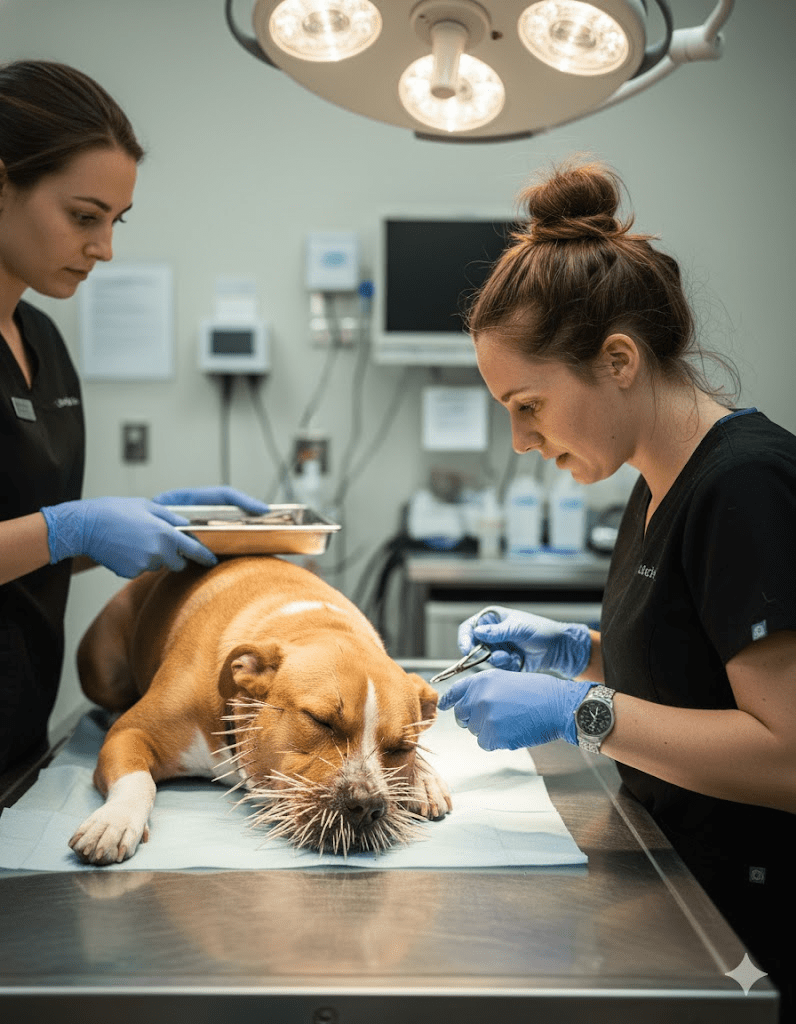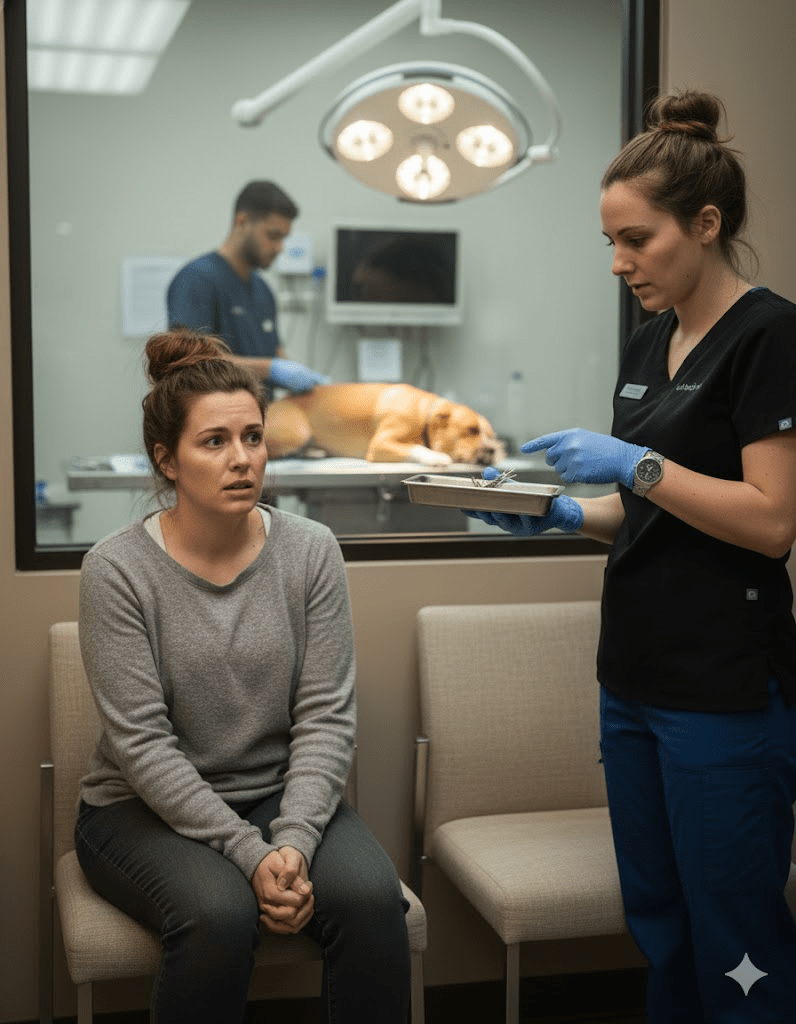The silence of the early morning at the Miller’s ranch was abruptly shattered not by the usual crow of a rooster, but by a series of frantic yelps and howls. Sarah Miller, still bleary-eyed, stumbled out onto the porch, her heart pounding. Her beloved dog, Buster, a sturdy Pitbull mix with a heart as big as his slobbery jowls, was in an unimaginable predicament. His face, once a picture of joyful Canine exuberance, was now a bristling porcupine of pain, embedded with hundreds of sharp quills. It was clear Buster had encountered more than just the local wildlife; he had engaged in a full-blown, ill-advised skirmish with a very displeased porcupine. The sheer number of quills suggested not a cautious sniff, but a headfirst dive into a spiny challenge. The sight was both heartbreaking and utterly baffling – how could a dog, usually so astute with forest creatures, have gotten himself into such a mess?

Upon reaching Buster, Sarah’s initial panic shifted to a desperate attempt to soothe him. She knew attempting to remove the quills herself was a dangerous gamble; many were deeply lodged, and the barbed tips would only cause more damage if pulled incorrectly. A frantic call to their local vet, Dr. Evans, confirmed her fears. “Bring him in immediately, Sarah,” the doctor’s voice was firm, “This isn’t something you can handle at home.” The short drive to the clinic felt interminable, with Buster whimpering softly in the back seat, occasionally pawing at his swollen snout, a gesture that only drove the quills deeper.

At the clinic, the gravity of the situation became even clearer. Dr. Evans explained that some quills might have migrated, potentially into Buster’s throat or even his internal organs. An emergency sedation was needed, followed by meticulous removal. The process, she warned, would be lengthy and costly, requiring specialized tools and extreme precision to ensure every single barb was extracted. Sarah’s heart sank, but there was no question – Buster’s well-being was paramount.

Over the next few hours, Sarah paced the waiting room, each tick of the clock amplifying her anxiety. Dr. Evans emerged periodically, offering updates that were a mix of good and bad news. They had successfully removed the majority of the facial quills, but a few stubborn ones had indeed migrated, necessitating further investigation. Just when Sarah thought the worst was over, Dr. Evans delivered a new concern: Buster’s eye appeared to be irritated, and a small, almost invisible quill was suspected to be lodged near the delicate cornea. This added another layer of complexity to an already intricate procedure.







